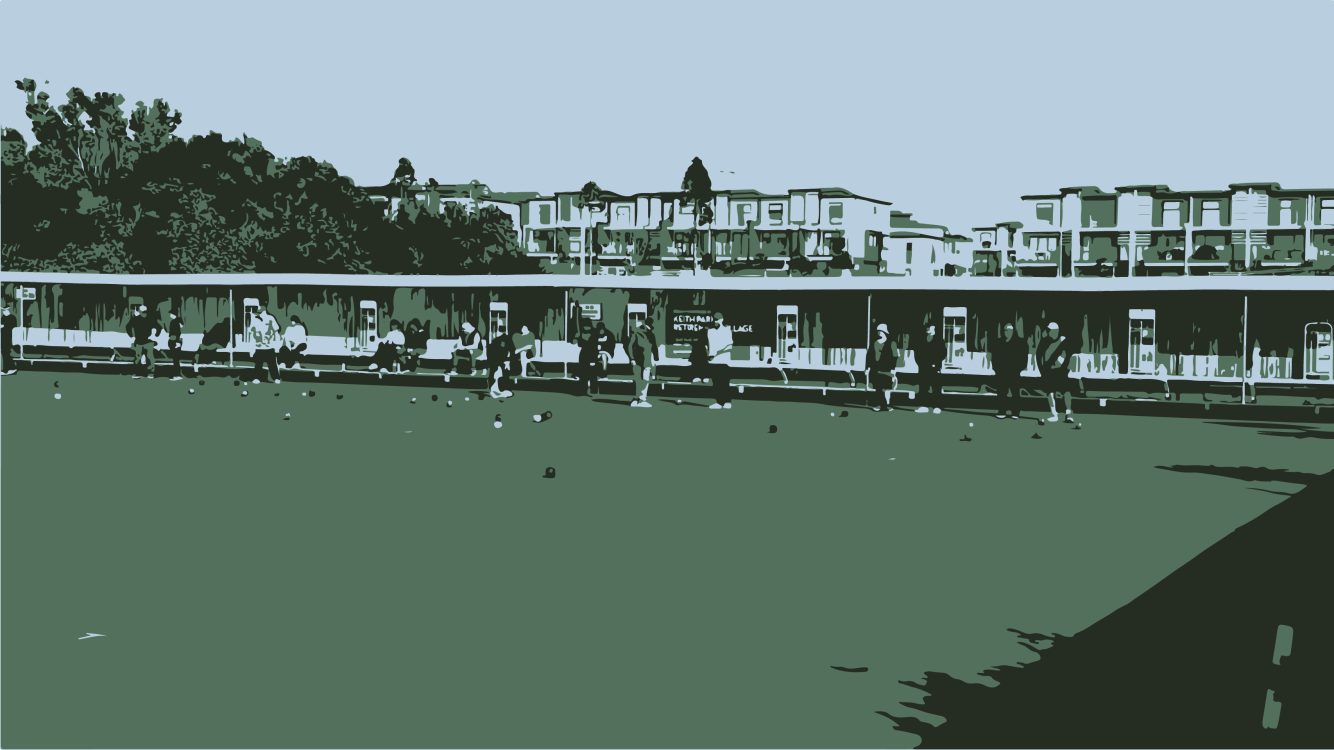The suburb of Hobsonville in the west of Auckland has been around a long time. In fact when Captain William Hobson, the first Governor of New Zealand, landed at the site, he considered making it the first seat of a new New Zealand government, But after the signing of the Treaty of Waitangi, Okiato (Russell) was chosen instead.
From 1920, Hobsonville was pretty much known as a New Zealand Air Force base. The base was wound down from 2002, and the huge housing and commercial development began taking shape to create the Hobsonville we know today.
Along the line, both a men’s and women’s bowling club were established in 1956/1957, and today the combined club is flourishing … fuelled by the burgeoning populace that has chosen to make this upper harbour locale home.
But it’s not just a mushrooming neighbourhood that has powered the Hobsonville Bowling Club to success.
Last year, we reported the huge contribution that the club’s social convenor, Nigel Rattray, had made to the membership through the implementation of a remarkable twilight bowls programme. And this year, the executive of the club, despite being voluntary, has gone about developing the club in an almost ‘businesslike’ way.
So much so, that the club has rightfully earned a place as one of New Zealand’s ‘clubs to be watched’.
The Hobsonville Bowling Club has attracted a club executive that won’t take ‘no’ for an answer … an executive that finds all the reasons they can do things …. rather than excusing themselves with all the reasons why they can’t do things.
And as a result, has earned Bowls New Zealand’s Club of the Year in 2023.
That award has been founded on the club’s implementation of a 11-point vision to ensure and assure success.
Firstly, the club is governed by a nine member (+ co-optees) executive made up of a rotating membership with diverse skills and experience in business, sports and local government. As a result (and secondly), the board has been able to implement a management regime to assure the club’s success as a valued bowls and community entity.
Thirdly, the club has a plan as to what it wants, and how it will resource what needs to be done in the near future. As well as (fourthly) a strategic business plan as to where the club wants to be in three to six years. That includes a roof over the greens.
Fifthly, they’ve earmarked ‘resourcing’ as a key focus … in particular, gaining and expanding sponsorship, grant-funding and their twilight tournament. Nigel’s success setting up twilight tournaments has changed twilight bowls from a tactical gambit to involve the community in bowls and the bowling club, to a key on-going strategic initiative to develop the club’s future.
Sixthly, the club is dedicated to constantly developing new bowls activities … and is not just content to repeat the same tournaments and events year after year. The Executive Committee is ‘going after’ new events … encouraging ideas, liaising with the local retirement villages, and prodding Bowls New Zealand and the Centre to host existing and new national and centre events.
Hobsonville has also committed itself to a development plan … developing the club (#7) which this last year has included a re-branding exercise, developing the bowls performance of the membership (#8), and developing its game administration capability (#9).
In number ten spot, the club is consciously developing its management capability .. creating an opportunity to also share that capability with other bowls clubs and other sports clubs.
And finally, Hobsonville has created a disability action plan. It means that disabled people and disabled bowlers will not ever be shunned or side-lined, but welcomed with open arms into a club which not only talks the talk about diversity, but enables disabled bowlers to enjoy a practical and equitable enabling environment at the club.
Hobsonville has made the decision that their future is in their own hands … and not something that can be left to happenstance.
And for that they’re Bowls New Zealand’s Club of the Year for 2023.

